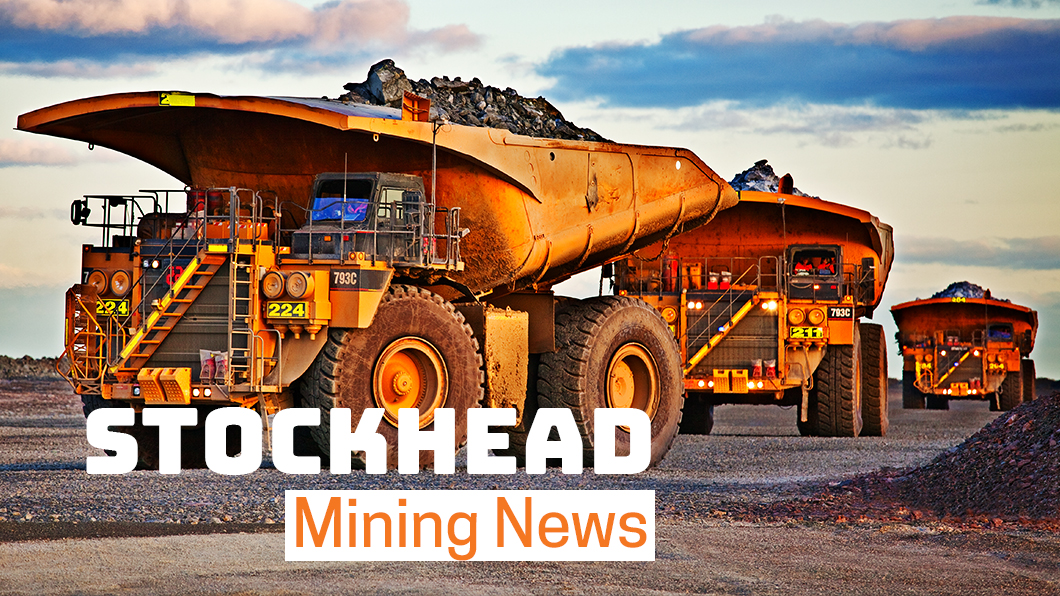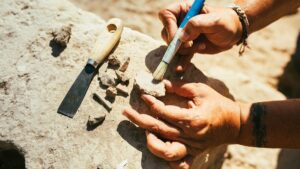Group 6 Metals chair Johann Jacobs on restarting King Island’s Dolphin mine and a bizarre tungsten cubes craze

Pic: John W Banagan / Stone via Getty Images
What do fairy penguins, cheese and tungsten cubes have in common?
The answer is King Island off the coast of Tasmania where tungsten player King Island Scheelite – now renamed Group 6 Metals (ASX:G6M) – is set to redevelop the historic Dolphin Mine.
Tungsten is a strategically significant metal, and the company has State and government support, with the Tasmanian Government writing a $10 million loan in February this year.
And last week the company announced it had locked in $88m of funding to get the $73m mine up and running again.
Speaking with Stockhead, executive chairman Johann Jacobs spoke about restart plans for the mine and the move away from the King Island name.
This week you announced the company changed its name to Group 6 Metals – what was the rationale behind that decision?
“Many things. King Island is very, very famous for cheese and many people don’t associate tungsten with scheelite – or think it’s a type of cheese – so we want to dispel that myth.
“The second thing is, King Island is geographically very limiting, and our aspiration is to broaden our footprint from purely King Island to other locations and potentially some other minerals.
“We tried to come up with a unique name, and I don’t know if you’ve ever tried to name a company, but as soon as you Google an option it comes up as a workshop in Karachi or in Acura or somewhere in the world.
“So, we went with Group 6, which is the grouping on the periodic table that tungsten is part of, and then the G6 political forum initiated the critical minerals push – of which tungsten is a part.
“Investors have certainly warmed to it because very few understand what scheelite is, because tungsten comes in two forms – scheelite and wolframite.”
You announced last week your plans to redevelop the Dolphin mine. When are you hoping to get up and running?
“We are hoping to shift first concentrate Q1 CY23, so it’s about a 15-month program of procurement, construction and commissioning.
“We have been engaged with Gecko Systems from Ballarat for some three years on the detailed design of the processing plant and over the last three or four months, we’ve been in discussions with them daily, refining the engineering drawings, defining the battery limits, so they are ready to go.
“They will undertake the procurement and construction of the processing plant and – based on their timeline – commissioning should start in first week of January 2023.”
What would you say to investors who may ask why it’s taken so long for the company to kickstart redevelopment?
“We’ve spent in the last five or six years an enormous amount of money on redeveloping a flow sheet for the production of the concentrator.
“The previous feasibility study was done on the basis where the concentrate would be produced entirely from flotation, and as you are aware, flotation involves a lot of reagents and a lot of chemicals to be able to float the concentrate.
“Today, the flow sheet that we have will be producing 80% of our product from a gravity circuit.
“So that doesn’t involve any reagents, any chemicals whatsoever.
“The product that we’ll be producing is significantly cleaner and environmentally friendly and if you look at the development plan that has been fully approved by EPA, the overburden coming out of the pit is being used to reclaim land into the Bass Strait because the rock that’s coming out of there is absolutely pH neutral and has no nasties.
“If you look at the Port of Grassy that they developed in the ’60s, the breakwater from that was actually built from overburden that came out of the original pit.
“And if you go to the island today and you drive on the breakwater, there are signs everywhere that… before you move your vehicle, please look under the wheels for fairy penguins, because that breakwater is one of the biggest fairy penguin habitats and breeding grounds on the island.
“The breakwater there is being used by the fairy penguins, so the whole project is very, very environmentally friendly.”
You’ve got some Greenfield exploration planned as well?
“Yes, a drill rig comes onto the island next month and that will explore an area called Investigator, which is about six kilometres to the southwest of the current Dolphin pit.
“And on top of that we’ve got the Bald Head mine.
“It was a mine back in the ’70s, but we believe there’s probably another two years of reserves in that historic mine to further lengthen the life of the mine.”
And so far, you’ve got about 70% of uptake sorted, is that right?
“That’s right, 20% of the uptake goes to a company called Wolfram in Austria.
“They have their own tungsten mine where they produce a concentrate which is significantly lower quality than ours and will blend theirs together with ours and some other sources as well and produce APT, which they then convert into powders.
“Most of the powders will go to their parent company called Sandvik, a very, very large tool-maker based in Scandinavia.
“The other 50% is going to a trader called Traxys based in Luxembourg, who are regarded as the largest tungsten trader in the Western world.
“We are seeking and are in discussions with some other parties for smaller amounts of concentrate offtake – but I’d be happy to get up to about 85% and leave the balance as spot.”
And what about the price? It’s hitting three-year highs, what’s the outlook for the near term?
“You’ve got to look at the backdrop of the rest of the industry.
“We are anticipating – given our recovery and grade – to be certainly in the lowest quartile of producers at about US$100 per metric tonne unit (mtu).
“I’m reliably told by industry experts that China’s average cost of production is circa US$230 per mtu.
“Argus, for example, see the prices actually coming down from their current levels but most industry experts see the price fluctuating between US$270-320 for the longer term.
“The growth of the market is circa 3% compound annual growth, which is slightly higher than the international GDP growth and that sees additional use of tungsten not only in defence, but in new technology, 3D printing, and there’s a lot of substitution of use going on into the wind turbines, which require a fair amount of tungsten.
“The Chinese can obviously manipulate the price but at some stage, they have to come to reality.
“I see the price is between US$270 and US$330-350 and at those prices, we will make a very, very good return.”
What’s your take on the current crypto craze around tungsten cubes?
“I just bought 10 one-centimetre cubes. But it’s a crazy world that we live in.
“I’d say buy G6M shares rather than cubes.
“How anybody will spend US$250,000 to buy a tonne of tungsten and turn it into a NFT that you can go and visit once a year – it makes absolutely no sense to me, it’s crazy.”
Is there anything you wanted to add?
“We will be turning first ground in about two weeks’ time, that will be the earthworks on which we will build the civils for the processing plant.
“And we’ve got an information session at the Grassy club where our general manager is going to be the explaining the project to the island people and opening a register for employment of locals.
“We hope that of this ultimately 65 FTE jobs once we’re in full operation, that more than two-thirds of those will be island residents.
“And we have had absolutely zero pushback from any of the residents on the island for the redevelopment to the mine.”
Related Topics
UNLOCK INSIGHTS
Discover the untold stories of emerging ASX stocks.
Daily news and expert analysis, it's free to subscribe.
By proceeding, you confirm you understand that we handle personal information in accordance with our Privacy Policy.








